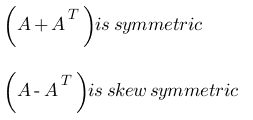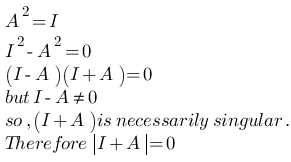Here are some of the most important points from matrices to be understood and remembered by EAMCET aspirants.
- Product of two upper triangular matrices is a upper triangular matrix.
- Determinant of triangular matrix is the product of the elements in the principle diagonal.
- (i) trace (KA) = K tr(A)
(ii) tr (A + B) = tr(A) + tr(B)
(iii) tr (AB) = tr (BA) - If A is a skew symmetric matrix then,
1-> All the elements in the principle diagonal are equal to zero.
2-> |A|≠ 0 then its order is an odd number. - If A, B are symmetric matrices, K is a scalar then
(i) KA is symmetric.
(ii) (A + B) and (A – B) are symmetric.
(iii) AB, BA are symmetric if and only if AB = BA. - For any square matrix A, (A + AT) is symmetric and (A – AT) is skew symmetric.
- A is a matrix of order m x n then A.AT, AT.A are symmetric matrices.
- The only non-singular idempotent matrix is the unit matrix. That is if A2 = A and A ≠ I then |A| = 0
- If A, B are square matrices of the same type satisfying the condition AB = A, BA = B then
(i) Both A and B are idempotent matrices
(ii) For any natural number ‘n’, (A+B)n = 2(n-1) (A+B) - If A is an involutary matrix then,
- If A is an orthogonal matrix then,
Determinant of A is ±1. If the rays are in right handed system then the value of determinant is +1 and if they are in left handed system then the value is -1.
- Every nilpotent matrix is a singular matrix.
- If A is a nilpotent matrix of index 3 then,
- If A is involutary matrix and A ≠ I, then the determinant of |I + A| = 0.
Proof :-





